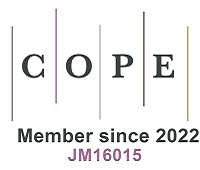REFERENCES
1. Wang J, Yu L, Hu L, Chen G, Xin H, Feng X. Ambient ammonia synthesis via palladium-catalyzed electrohydrogenation of dinitrogen at low overpotential. Nat Commun 2018;9:1795.
2. Suryanto BHR, Matuszek K, Choi J, et al. Nitrogen reduction to ammonia at high efficiency and rates based on a phosphonium proton shuttle. Science 2021;372:1187-91.
4. Chang F, Gao W, Guo J, Chen P. Emerging materials and methods toward ammonia-based energy storage and conversion. Adv Mater 2021;33:e2005721.
5. Cechetto V, Di Felice L, Gallucci F. Advances and perspectives of H2 production from NH3 decomposition in membrane reactors. Energy Fuels 2023;37:10775-98.
6. He W, Zhang J, Dieckhöfer S, et al. Splicing the active phases of copper/cobalt-based catalysts achieves high-rate tandem electroreduction of nitrate to ammonia. Nat Commun 2022;13:1129.
7. Wang L, Xia M, Wang H, et al. Greening ammonia toward the solar ammonia refinery. Joule 2018;2:1055-74.
8. Weng G, Lei S, Wang R, et al. A high-efficiency electrochemical proton-conducting membrane reactor for ammonia production at intermediate temperatures. Joule 2023;7:1333-46.
9. Chen G, Yuan Y, Jiang H, et al. Electrochemical reduction of nitrate to ammonia via direct eight-electron transfer using a copper - molecular solid catalyst. Nat Energy 2020;5:605-13.
10. Sun J, Alam D, Daiyan R, et al. A hybrid plasma electrocatalytic process for sustainable ammonia production. Energy Environ Sci 2021;14:865-72.
11. Arif M, Babar M, Azhar U, et al. Rational design and modulation strategies of Mo-based electrocatalysts and photo/electrocatalysts towards nitrogen reduction to ammonia (NH3). Chem Eng J 2023;451:138320.
12. Mukherjee S, Yang X, Shan W, et al. Atomically dispersed single Ni site catalysts for nitrogen reduction toward electrochemical ammonia synthesis using N2 and H2O. Small Methods 2020;4:1900821.
13. Zheng J, Jiang L, Lyu Y, Jiang SP, Wang S. Green synthesis of nitrogen-to-ammonia fixation: past, present, and future. Energy Environ Mater 2022;5:452-7.
14. Danyal K, Dean DR, Hoffman BM, Seefeldt LC. Electron transfer within nitrogenase: evidence for a deficit-spending mechanism. Biochemistry 2011;50:9255-63.
15. Foster SL, Bakovic SIP, Duda RD, et al. Catalysts for nitrogen reduction to ammonia. Nat Catal 2018;1:490-500.
16. Shi Z, Zhang X, Lin X, et al. Phase-dependent growth of Pt on MoS2 for highly efficient H2 evolution. Nature 2023;621:300-5.
17. Chen S, Liu X, Xiong J, Mi L, Li Y. Engineering strategies for boosting the nitrogen reduction reaction performance of MoS2-based electrocatalysts. Materials Today Nano 2022;18:100202.
18. Li Y, Gu Q, Johannessen B, et al. Synergistic Pt doping and phase conversion engineering in two-dimensional MoS2 for efficient hydrogen evolution. Nano Energy 2021;84:105898.
19. Li Y, Wang H, Xie L, Liang Y, Hong G, Dai H. MoS2 nanoparticles grown on graphene: an advanced catalyst for the hydrogen evolution reaction. J Am Chem Soc 2011;133:7296-9.
20. Zhang L, Ji X, Ren X, et al. Electrochemical ammonia synthesis via nitrogen reduction reaction on a MoS2 catalyst: theoretical and experimental studies. Adv Mater 2018;30:e1800191.
21. Li J, Wei F, Dong C, Wang Z, Xiu Z, Han X. Recent progress of inorganic metal-based catalysts in electrocatalytic synthesis of ammonia. Mater Today Energy 2021;21:100766.
22. Karunadasa HI, Montalvo E, Sun Y, Majda M, Long JR, Chang CJ. A molecular MoS2 edge site mimic for catalytic hydrogen generation. Science 2012;335:698-702.
23. Yan Z, Ji M, Xia J, Zhu H. Recent advanced materials for electrochemical and photoelectrochemical synthesis of ammonia from dinitrogen: one step closer to a sustainable energy future. Adv Energy Mater 2020;10:1902020.
24. Ren Y, Yu C, Tan X, Huang H, Wei Q, Qiu J. Strategies to suppress hydrogen evolution for highly selective electrocatalytic nitrogen reduction: challenges and perspectives. Energy Environ Sci 2021;14:1176-93.
25. Wu W, Wang L, Li Y, et al. Piezoelectricity of single-atomic-layer MoS2 for energy conversion and piezotronics. Nature 2014;514:470-4.
26. Fei H, Guo T, Xin Y, et al. Sulfur vacancy engineering of MoS2 via phosphorus incorporation for improved electrocatalytic N2 reduction to NH3. Appl Catal B Environ 2022;300:120733.
27. Fei H, Liu R, Wang J, et al. Targeted modulation of competitive active sites toward nitrogen fixation via sulfur vacancy engineering over MoS2. Adv Funct Mater 2023;33:2302501.
28. Niu L, Wang D, Xu K, et al. Tuning the performance of nitrogen reduction reaction by balancing the reactivity of N2 and the desorption of NH3. Nano Res 2021;14:4093-9.
29. Guo J, Tadesse Tsega T, Ul Islam I, Iqbal A, Zai J, Qian X. Fe doping promoted electrocatalytic N2 reduction reaction of 2H MoS2. Chin Chem Lett 2020;31:2487-90.
30. Lin G, Ju Q, Guo X, et al. Intrinsic electron localization of metastable MoS2 boosts electrocatalytic nitrogen reduction to ammonia. Adv Mater 2021;33:e2007509.
31. Wu Z, Zhang R, Fei H, Liu R, Wang D, Liu X. Multiphasic 1T@2H MoSe2 as a highly efficient catalyst for the N2 reduction to NH3. Appl Surface Sci 2020;532:147372.
32. You M, Yi S, Hou X, et al. High temperature induced S vacancies in natural molybdenite for robust electrocatalytic nitrogen reduction. J Colloid Interface Sci 2021;599:849-56.
33. Zhao X, Zhang X, Xue Z, Chen W, Zhou Z, Mu T. Fe nanodot-decorated MoS2 nanosheets on carbon cloth: an efficient and flexible electrode for ambient ammonia synthesis. J Mater Chem A 2019;7:27417-22.
34. Ivancic I, Degobbis D. An optimal manual procedure for ammonia analysis in natural waters by the indophenol blue method. Water Res 1984;18:1143-7.
35. Kamila S, Mohanty B, Samantara AK, et al. Highly active 2D layered MoS2-rGO hybrids for energy conversion and storage applications. Sci Rep 2017;7:8378.
36. Sun T, Li Z, Liu X, Ma L, Wang J, Yang S. Facile construction of 3D graphene/MoS2 composites as advanced electrode materials for supercapacitors. J Power Sources 2016;331:180-8.
37. Liu Y, Chen Y, Tian Y, et al. Synergizing hydrogen spillover and deprotonation by the internal polarization field in a MoS2/NiPS3 vertical heterostructure for boosted water electrolysis. Adv Mater 2022;34:e2203615.
38. Wang R, Xu C, Sun J, et al. Heat-induced formation of porous and free-standing MoS2/GS hybrid electrodes for binder-free and ultralong-life lithium ion batteries. Nano Energy 2014;8:183-95.
39. Qian X, Zhu G, Wang K, et al. Bowl-like mesoporous polymer-induced interface growth of molybdenum disulfide for stable lithium storage. Chem Eng J 2020;381:122651.
40. Zhao Y, Chang K, Gu Q, et al. Noble metal-free 2D 1T-MoS2 edge sites boosting selective hydrogenation of maleic anhydride. ACS Catal 2022;12:8986-94.
41. Sheng Z, Qi P, Lu Y, et al. Nitrogen-doped metallic MoS2 derived from a metal-organic framework for aqueous rechargeable zinc-ion batteries. ACS Appl Mater Interfaces 2021;13:34495-506.
42. Hu X, Zeng X, Liu Y, et al. Nano-layer based 1T-rich MoS2/g-C3N4 co-catalyst system for enhanced photocatalytic and photoelectrochemical activity. Appl Catal B Environ 2020;268:118466.
43. Li J, Zhang Y, Liu C, et al. 3.4% Solar-to-ammonia efficiency from nitrate using Fe single atomic catalyst supported on MoS2 nanosheets. Adv Funct Mater 2022;32:2108316.
44. Cao Y, Zhang Y, Yang L, et al. Boosting oxygen reduction reaction kinetics through perturbating electronic structure of single-atom Fe-N3S1 catalyst with sub-nano FeS cluster. J Colloid Interface Sci 2023;650:924-33.
45. Chen K, Wang J, Kang J, Lu X, Zhao X, Chu K. Atomically Fe-doped MoS2-x with Fe-Mo dual sites for efficient electrocatalytic NO reduction to NH3. Appl Catal B Environ 2023;324:122241.
46. Zhao W, Yuan S, Lei S, et al. Tailoring rational crystal orientation and tunable sulfur vacancy on metal-sulfides toward advanced ultrafast ion-storage capability. Adv Funct Mater 2023;33:2211542.
47. Baker M, Gilmore R, Lenardi C, Gissler W. XPS investigation of preferential sputtering of S from MoS2 and determination of MoSx stoichiometry from Mo and S peak positions. Appl Surface Sci 1999;150:255-62.
48. Wang F, Zhang W, Jiang J, et al. Nitrogen-rich carbon-supported ultrafine MoC nanoparticles for the hydrotreatment of oleic acid into diesel-like hydrocarbons. Chem Eng J 2020;382:122464.
49. Xue JY, Li FL, Zhao ZY, et al. In Situ generation of bifunctional Fe-doped MoS2 nanocanopies for efficient electrocatalytic water splitting. Inorg Chem 2019;58:11202-9.
50. Li H, Cheng M, Wang P, et al. Reducing contact resistance and boosting device performance of monolayer MoS2 by in situ Fe doping. Adv Mater 2022;34:e2200885.
51. Liu S, Meng X, Xu J, Zhou H, Liu S, Wang J. Porous Si@C composite anode material prepared using dopamine as a carbon source for high-performance lithium- ion batteries. Int J Electrochem Sci 2020;15:3479-94.
52. Zou W, Yeo SY. Characterization of freeze-thaw treatments upon binders in ancient chinese wall paintings by X-ray diffraction (XRD) and attenuated total reflection - fourier transform infrared (ATR-FTIR) spectroscopy. Anal Lett 2024;57:190-201.
53. Rozenberg M, Jung C, Shoham G. Low temperature FTIR spectra and hydrogen bonds in polycrystalline cytidine. Spectrochim Acta A 2004;60:2369-75.
54. Liu S, Qian T, Wang M, et al. Proton-filtering covalent organic frameworks with superior nitrogen penetration flux promote ambient ammonia synthesis. Nat Catal 2021;4:322-31.










